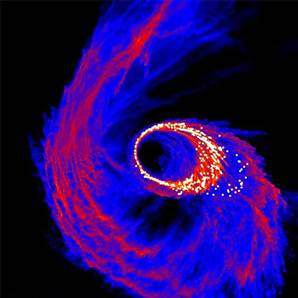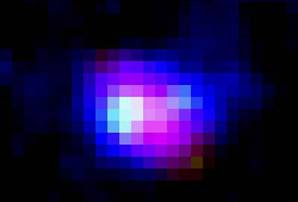
On May 29, the crew of the International Space Station (ISS) will double, from three astronauts to six. In a media briefing held today, NASA said that it has accomplished the necessary tasks ahead of Expedition 20--a Soyuz mission that will carry the second half of the crew, scheduled to launch on May 27. Not only will this complete the station's first six-person crew, but the mission will be the first time that crew members from all five ISS partners--Japan, Russia, Europe, Canada, and the United States--are aboard.
Increasing the crew capacity of the space station is a major advance for space-science research and for travel beyond low Earth orbit to the Moon and Mars. "It opens up more possibilities, such as scheduling more science, because we don't have to use all our people for just required maintenance to the station," said Courtenay McMillan, Expedition 20's lead flight director, during the briefing. But, she added, it also presents communication challenges: "Now we have twice as many people and not as many phone lines." When the shuttle or Soyuz spacecraft docks with the station, there are short periods of time when there are six or more astronauts aboard the station, using the additional spacecraft for support. However, it's only for a week or two, and then three astronauts remain living on the station.
The expansion of the station meant modifying its life-support systems. Most notably, NASA built a comprehensive water recovery system that uses specially designed filters and chemical processes to cleanse waste liquids--astronauts' urine and perspiration--so that they become drinkable water. The system has had a few technical difficulties, but according to Dan Hartman, manager of Integration and Operations for the ISS program, it should be operational by next week. A new toilet, crew quarters, galley, and treadmill (named after comedian Stephen Colbert) have also been developed to support the additional crew members.
NASA's main concern, should missions to resupply the station be delayed, is food. "We can handle a month-period slip for resupply, and if that time was going to be extended, then we would react by using other missions," said Hartman at today's media briefing. NASA has acquired a robotic spacecraft from Japan--the H-II Transfer Vehicle (HTV)--to resupply the station in between scheduled shuttle missions. The HTV will connect to the Japanese Experimental Module (JEM), called Kibo, and will be "a major new capability to resupply the station, allowing for the launch of rack modules and external and internal payloads," said Hartman.
"The logistics are done, and we have the supplies ready to expand the crew and allow them to stay for an extended period of time," added Ben Pawlik, Expedition 20's increment manager, at the briefing. The station will even have room to support seven additional crew members when the shuttle docks at the ISS.






















